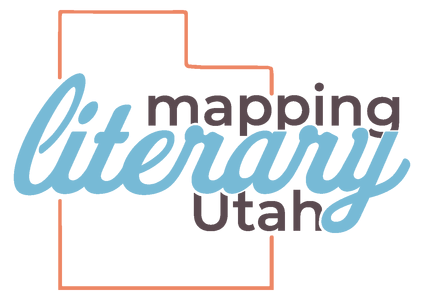Montgomery "Monty" Atwater was a US veteran, forest ranger, skier, and author who published ski guides, field guides, and adventure stories for children and young adults. Following his service with the 10th Mountain Division during World War II, Atwater brought his expertise and experience with backcountry terrain to Utah, where he began working with the Forest Service in Alta, particularly around public safety in the Wasatch National Forest. Over the course of his life, Atwater brought greater attention to the possibilities of avalanche control and snow science. In addition to several works of fiction and nonfiction, Atwater’s accomplishments included innovating several new means of forecasting, tracking, and managing avalanches. In 1973, he was named “the father of snow avalanche work in the United States” in a joint announcement from the National Ski Patrol, the U.S. Forest Service, and the National Park Service.
Atwater was born in Baker City, Oregon, in 1904, and graduated from Harvard with a bachelor’s degree in English literature in 1926. He then moved back West, living in Montana for several years while working as a trapper and rancher; his career as an author also kicked off there, as he began writing mysteries and short stories during his downtime. During World War II, Atwater was a winter warfare instructor at Camp Hale in Colorado and then deployed to active combat duty first in northern Europe and then in Alaska’s Aleutian Islands, before being discharged due to injuries. His 1945 move to Utah came at the suggestion of a fellow veteran from the 10th Mountain Division, skier Sverre Engen.
When Atwater arrived in Alta, the Wasatch National Forest post was tasked with ensuring skiers' safety in Little Cottonwood Canyon, but there was little program infrastructure or equipment for building this kind of robust public safety program. The resources at Atwater’s disposal during the winter of 1945-46 included the support of his new supervisor down in Salt Lake City, his own personal skiing experience, and some thermometers, warning signs, a snow-measuring stake, and a Forest Service manual that promised January would bring at least three avalanches to the area. Though under-equipped for the task, Atwater quickly proved his skills and leadership ability with a rescue that established four key tenets of avalanche search-and-rescue to this day: 1. Question and listen to survivors, 2. Have good leadership, 3. Start searches quickly, 4. Know at what point the missing were last seen.
During his time with the Forest Service in Alta, Atwater developed several new ways of mapping and managing avalanche paths, including equipment such as the 1962 Avalauncher, a pneumatic cannon used to launch avalanche control explosives (based on a machine for pitching baseballs). Atwater also established a full team of fellow snow rangers in 1952—the first such team in the US—and was one of the first Americans to try and master heliskiing, which entails using a helicopter to reach mountain heights in backcountry terrain in order to access untracked, deep-powder snow. His expertise was called upon for the 1960 Winter Olympics in Squaw Valley, California, and again for the Alpine World Ski Championships in Chile. Both locations were known for large, destructive avalanches, but Atwater, in his role as director of avalanche control, prevented catastrophe by triggering smaller avalanches beforehand: his Chilean colleagues, riffing off his use of munitions, often called him Señor Boom-Boom. By his retirement from the Forest Service in 1964, and then his death from a heart attack in 1976, Atwater had well earned his reputation as an avalanche tracker, snow science researcher, and skier.
Atwater’s books fall into several distinct genres. His nonfiction includes guides written for the Forest Service regarding public safety and avalanches, as well as a memoir and a collection of case histories. His books for children and young adults build from his firsthand experience with the power and wonder of the natural world, offering readers thrilling tales of danger, awe, and mystery.
Bibliography
Nonfiction:
- Avalanche Handbook, USDA Forest Service, 1953
- The Avalanche Hunters, Macrae Smith Company, 1968
- Ski with Sverre: Deep Snow and Packed Slope Ski Technique (with Engen Sverre), New Directions, 1947
- The Climax Avalanche: A Study in Case Histories (with Edward R. LaChapelle), USDA Forest Service, 1961
- The Forest Rangers, Macrae Smith Company, 1969
Young Adult Fiction:
- Avalanche Patrol, Random House, 1951
- Cattle Dog, Random House, 1954
- Flaming Forest, Little, Brown and Company, 1941
- Government Hunter, Macmillan, 1940
- Hank Winton: Smokechaser, Random House, 1947
- Rustlers on the High Range, Random House, 1952
- Ski Patrol, Random House, 1943
- Smoke Patrol, Random House, 1949
- Snow Rangers of the Andes,Random House, 1967
- The Ski Lodge Mystery, Random House, 1959
- The Trouble Hunters,Random House, 1956
Links

